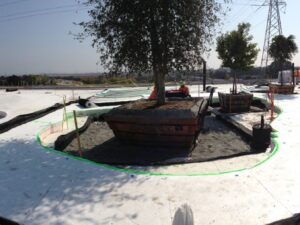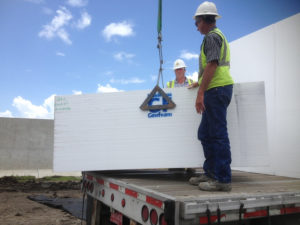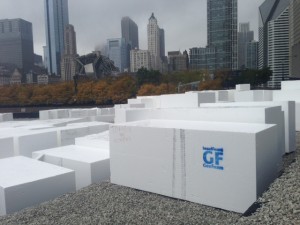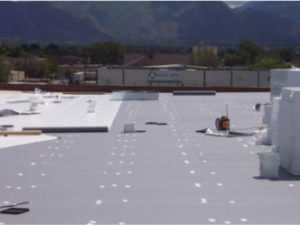Originally published in Civil + Structural Engineer Magazine
Engineering properties benefit applications requiring lightweight and strong fill.

With zero-imposed lateral load, EPS geofoam enables less robust retaining wall to save money and time.
Many engineers are familiar with using geosynthetics such as expanded polystyrene (EPS) geofoam in infrastructure projects, but might not have considered the applications and benefits of the material in building construction. In the same way that geofoam’s light weight, strength, and consistency help simplify and improve construction of roadways and other infrastructure, those same benefits apply to building applications ranging from soft soil remediation to construction of stadium seating and landscaped roofs.
Although it is light weight, EPS geofoam has better bearing capacity than most foundation soils. The material’s compressive resistance ranges from about 317 to 2,678 pounds/square foot at a 1 percent strain. As long as combined dead/live loads do not exceed 1 percent strain, the material will not creep or experience plastic yield.
In the Civil + Structural Engineer article, you’ll see common infrastructure applications for geofoam, which also work well for various building needs including
- Landscaped roofs
- Soft soil remediation
- Swimming books
- Slope leveling
- Stadium and theater seating
Continue reading more about geofoam performance attributes and building applications in Civil + Structural Engineer





